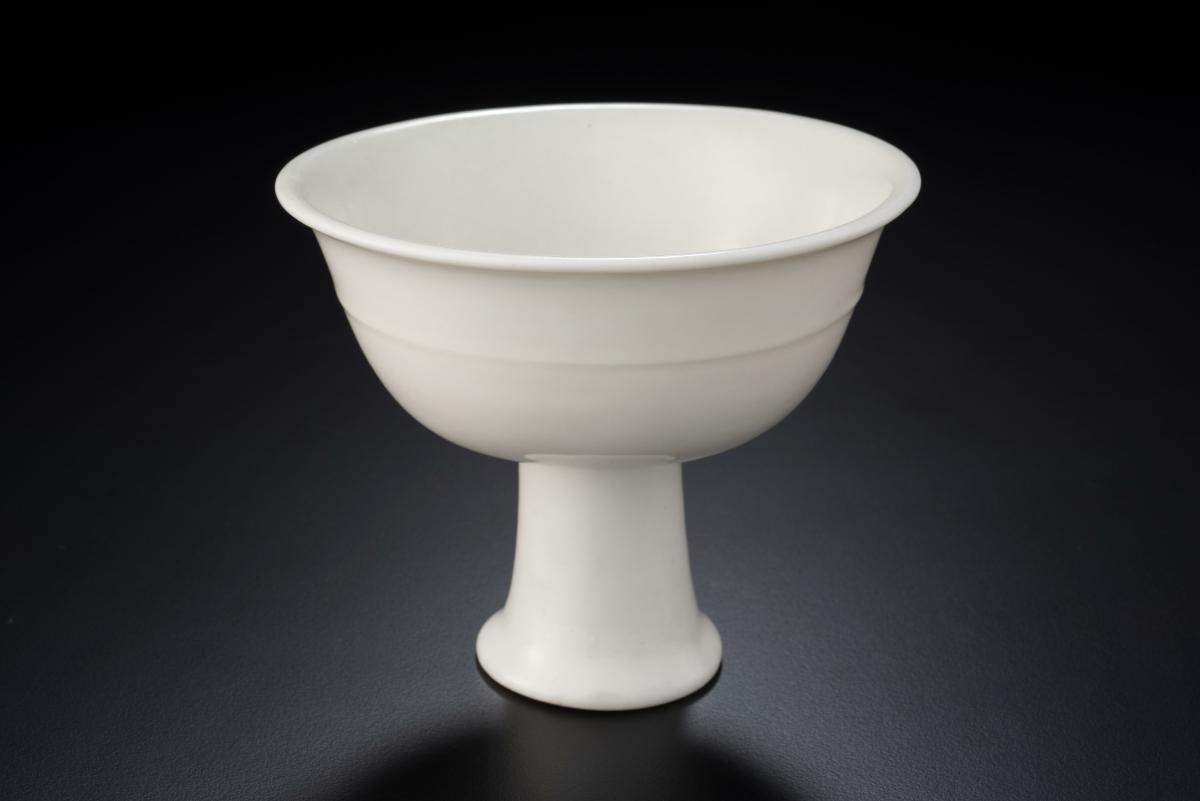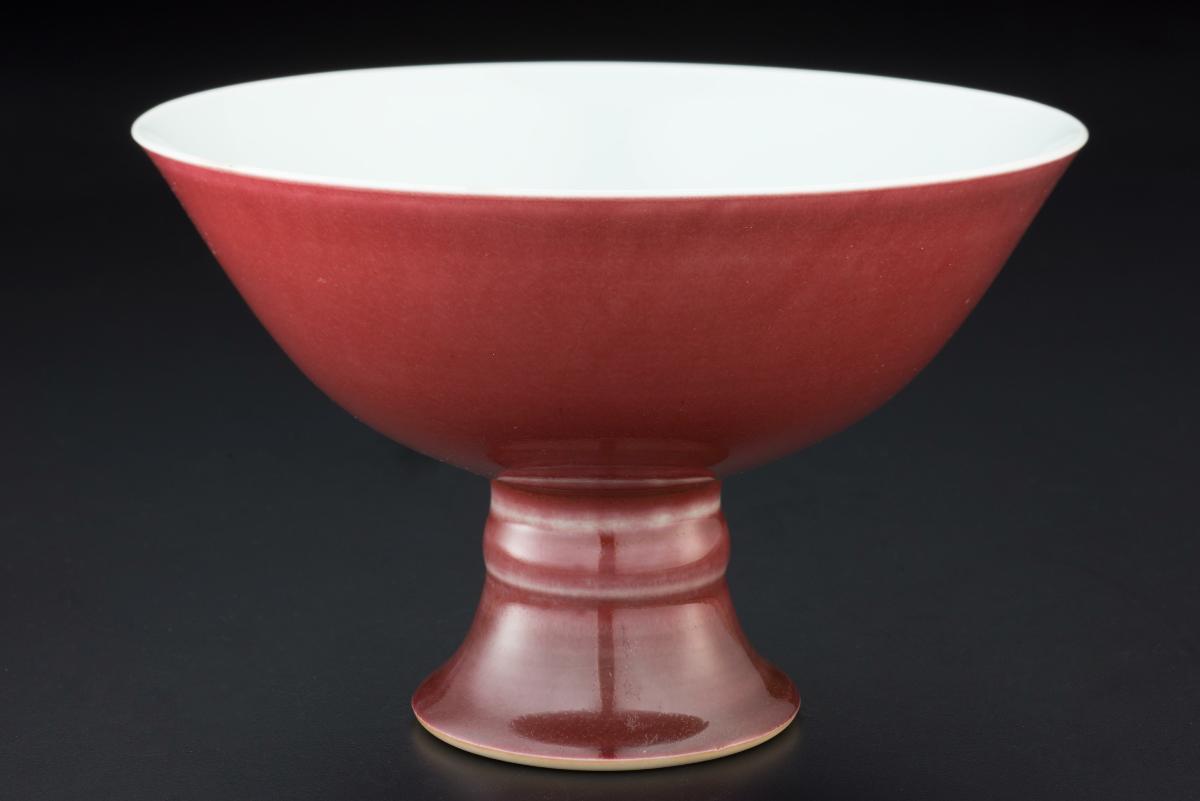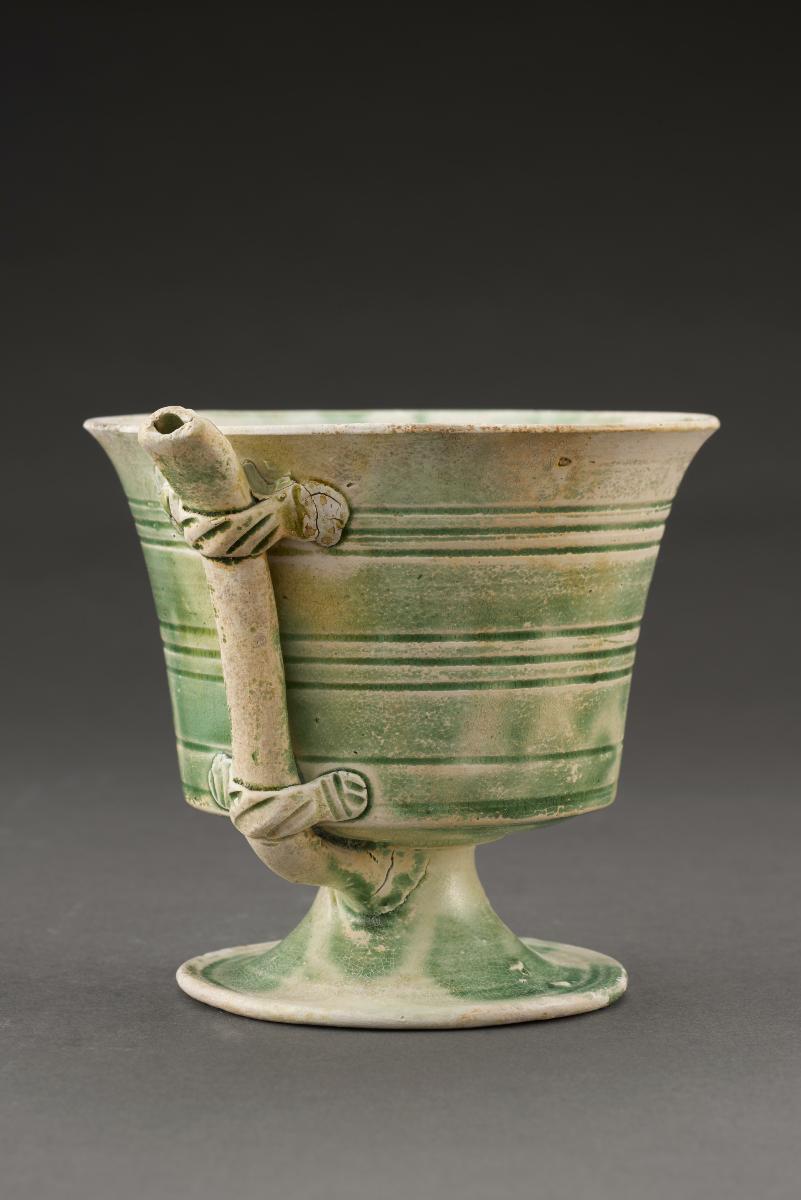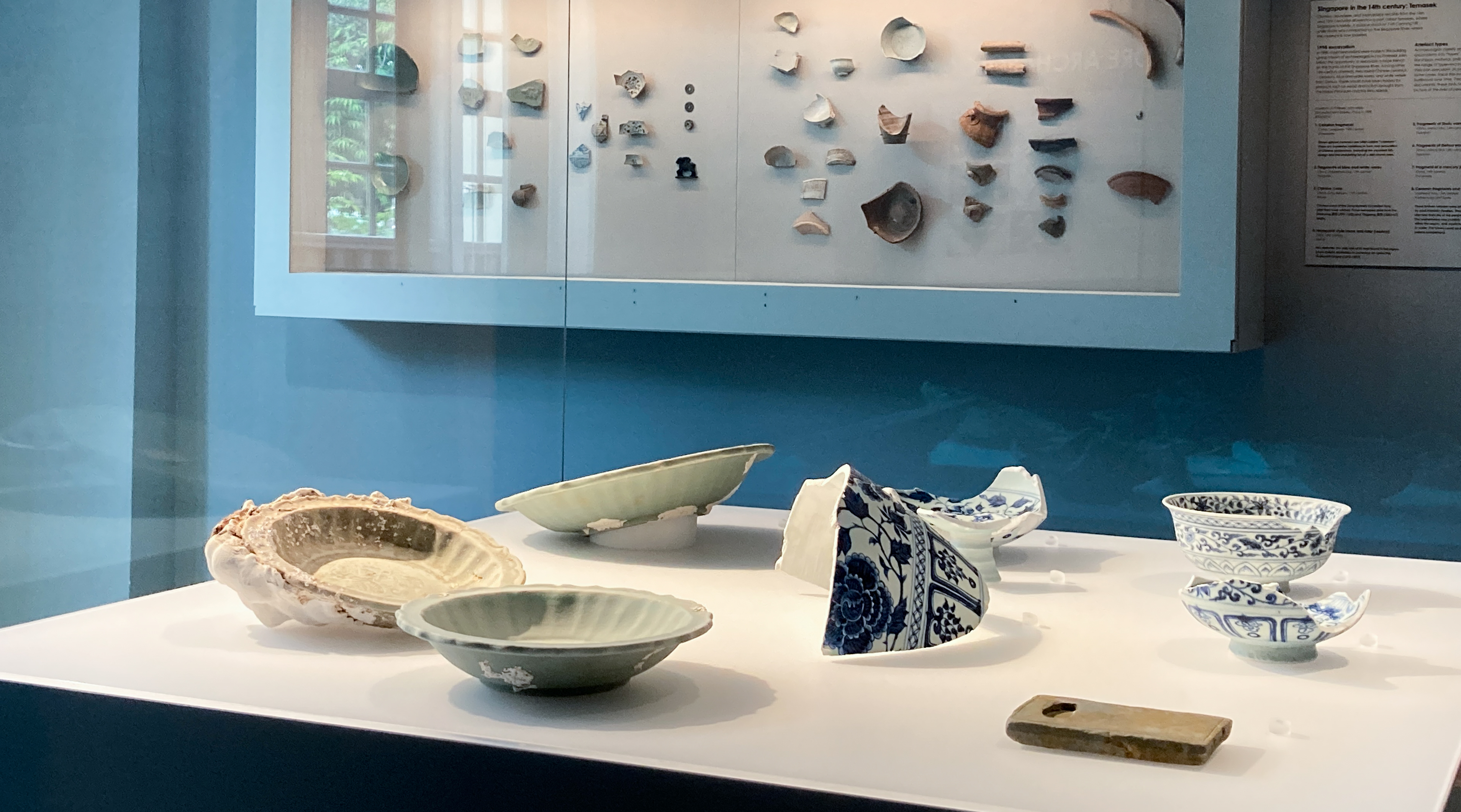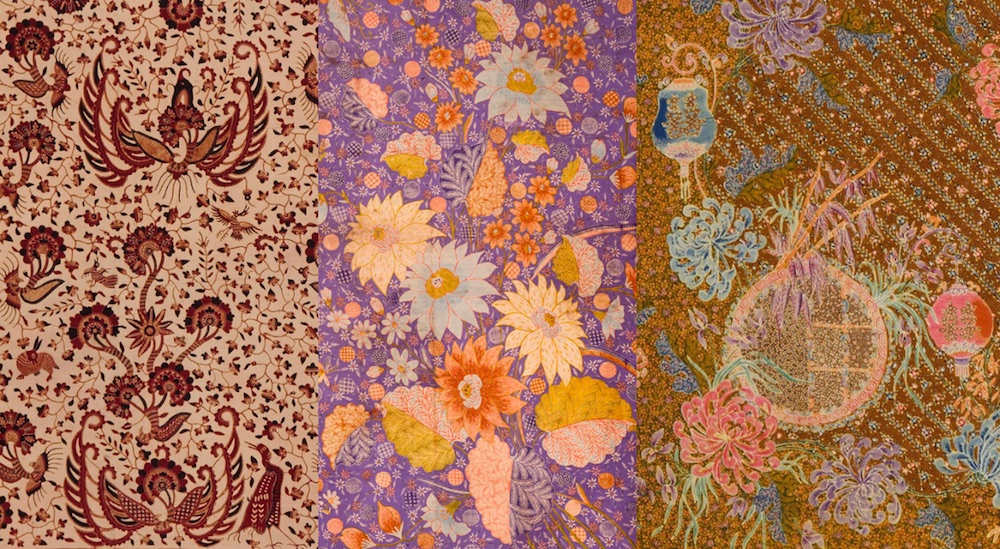This heavily potted piece is covered in a cold white glassy glaze. It was thrown in two parts - the large cup with raised band around the mid-section and the hollow stem. A hole at the base of the stem is evidence of the need for air circulation during the firing of such heavy pieces. The piece is reminiscent of the large imperial porcelain stem cups such as the whitewares made for the Emperor Yongle (1403–1424). White signified filial piety and was in keeping with the Tibetan Buddhist rituals and ancestor worship practiced at the imperial court at that time. This stem cup was possibly used in a similar way perhaps at a domestic altar.Dehua, located on the southeast coast of Fujian province, is well known for its production of white porcelain, known to Europeans as 'blanc de Chine'. The earliest Dehua porcelain was produced as early as the 14th century but the production and quality of these porcelain peaked around the 17th and 18th centuries.




